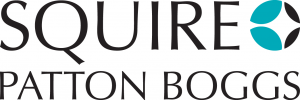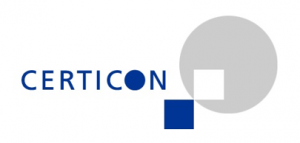Time to add risk in multi-asset portfolios?
22.04.2020Company: BNP PARIBAS S.A., pobočka Česká republika
After six weeks of lockdown across much of Europe, countries such as Denmark, Germany, and Austria have begun to loosen restrictions on public and business activity. Against this backdrop, senior investment strategist Daniel Morris and Denis Panel, Chief Investment Officer for Multi-Asset Quantitative Solutions (MAQS), discuss asset allocation. In particular, they focus on whether it is opportune to add to allocations to risk in multi-asset portfolios.
Daniel: We have had some positive news over the last week with several European countries joining the US in taking the first steps toward a loosening of lockdown measures. Clearly, both the extent and pace of this loosening will vary. The prospect of a return to even a small measure of normality has undoubtedly contributed to the rally in US stocks. The S&P500 index has regained more than half the losses it sustained in March. Investors are now asking themselves how much further this rally can run.
With valuations for stocks having, on some measures, regained their pre-crisis levels, how do you go about determining whether it is appropriate to add to equity risk?
Denis: We are monitoring the crisis via four key pillars: virus evolution; economic disruption and resumption; policy responses; and markets stress. To identify important turning points, we find it helpful to look at five key phases. The first phase was market panic and a sharp unwinding of risk exposures. The second was aggressive policy support, notably by the US Federal Reserve and the US Treasury. The third virus control and lockdowns. The fourth assessing the economic damage, and the fifth one is exit strategies and ‘learning to live’ with the threat of the virus.
We believe we are currently in the transition from ‘virus control’ to ‘assessing the economic damage’. So far, the combination of policy support and the perception of virus control in the Western world is boosting risky assets. However, we don’t think we are out of the woods because there is huge uncertainty about the economic damage. We are only starting to learn about it now.
Our base case is for a recession in the first half of 2020 followed by a gradual and bumpy recovery in the second half. Such a U-shaped recovery will likely involve ‘learning to live’ with the virus via innovations in testing and a gradual economic resumption. The main downside risk stems from long and intermittent shutdowns that prolong a global recession. A bullish scenario would involve rapid progress on virus control and an economic resumption that leads to healthy reflation.
Amid this uncertainty, we are nimble in our approach, using both the fundamental and market dynamics pillars of our investment process to identify opportunities, both in the short and medium term.
We think that equity prices have room to rally further in the medium term under our base case. In the near term, however, after this strong rally in stocks, a setback is possible as markets assess the damage to prospects for the economy and earnings along with the risk of new outbreaks.
What, then, is your overall asset allocation? How are you positioning portfolios across asset classes to cope with the uncertainty and volatility?
Denis: Let me give you on overview of our main positions and the rationale for them.
Equities: We are overweight UK and emerging market equities, but we have a tactical underweight in US equities, so overall we are currently underweight equities. The rationale is that on an historical basis, UK and EM valuations look more attractive than in the US.
We see China’s economy as more advanced on the road to recovery than the West. This has positive implications for commodities, as China is a major source of demand. Both UK and EM equities stand to benefit from China’s recovery and demand for commodities.
Government bonds: We are underweight the core eurozone markets, we are overweight US breakeven inflation, underweight US Treasuries via options and we hold a position in options anticipating a steepening (long-dated yields rising faster than their shorter-dated counterparts do) of the US Treasury yield curve.
Our reasoning is that core eurozone yields are close to historical lows. Central bank purchases of bonds are aimed at keeping yields low, but this will not be straightforward as investors begin to price in the huge fiscal policy expansion and increased bond issuance. Yields could also rise if the fiscal and monetary boost results in inflation rather than growth.
In corporate debt, we are overweight USD and EUR investment-grade debt (relative to sovereign debt).
Emerging markets: We are overweight EM USD denominated debt. We view hard currency debt as the safest sub-asset class within EM. The crisis has left valuations very appealing with risk premiums at about 600 basis points above the yields of US Treasury bonds. We expect aggressive global policy stimulus, more stability in commodity prices and an early recovery in China to support the asset class.
Commodity assets: We are overweight aggregate commodities (ex Ags) and also overweight the Australian dollar relative to the US dollar. Our analysis suggests that valuations of cyclical commodities are at levels not seen since the 1970s. These assets usually outperform in the early stages of a recovery.
Over the medium term, the OPEC+ and G20 countries’ agreement to cut production should help the oil market. We expect prices to rise as demand recovers.
Separately, we see gold as an attractive asset and we are overweight. It should be seen as a currency that central banks cannot debase and as a good hedge against the risk of a more inflationary world.
In summary, we are cautiously optimistic and are seeking opportunities to add risk in equity and credit markets.
Final thoughts?
Denis: Over the last week, the relaxation of isolation measures in some countries has been a positive signal. Massive support from central banks and governments has so far contained the impact and central banks appear prepared to do more.
In the short run, we are positioned for a correction in stock markets, but over a longer investment horizon, we think this is no time to sell risky assets. We remain confident society will learn to live with the virus and the economy will recover.
Any views expressed here are those of the speakers as of the date of publication, are based on available information, and are subject to change without notice. Individual portfolio management teams may hold different views and may take different investment decisions for different clients.
The value of investments and the income they generate may go down as well as up and it is possible that investors will not recover their initial outlay. Past performance is no guarantee for future returns.
Investing in emerging markets, or specialised or restricted sectors is likely to be subject to a higher-than-average volatility due to a high degree of concentration, greater uncertainty because less information is available, there is less liquidity or due to greater sensitivity to changes in market conditions (social, political and economic conditions).
Some emerging markets offer less security than the majority of international developed markets. For this reason, services for portfolio transactions, liquidation and conservation on behalf of funds invested in emerging markets may carry greater risk.
More information attached.
Tags: Finance | Health |







